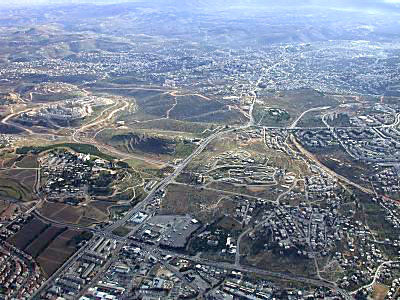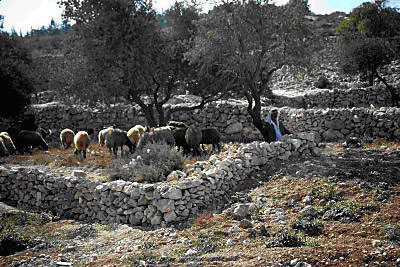Bethlehem
 |
View Looking South from Jerusalem. Bethlehem is in the far distance along the main road from Bethlehem to Jerusalem |
 Sheep Pens East of Bethlehem. The area east of the city is the traditional area of fields where shepherds kept watch on that Holy Night when Jesus was born. Today, shepherds still keep watch in these fields. |
Photos Courtesy of BiblePlaces.com The following is from Easton's Bible Dictionary A city in the “hill country” of Judah. It was originally called Ephrath (Gen. 35:16, 19; 48:7; Ruth 4:11). It was also called Beth-lehem Ephratah (Micah 5:2), Beth-lehem-judah (1 Sam. 17:12), and “the city of David” (Luke 2:4). It is first noticed in Scripture as the place where Rachel died and was buried “by the wayside,” directly to the north of the city (Gen. 48:7). The valley to the east was the scene of the story of Ruth the Moabitess. There are the fields in which she gleaned, and the path by which she and Naomi returned to the town. Here was David’s birth-place, and here also, in after years, he was anointed as king by Samuel (1 Sam. 16:4-13); and it was from the well of Bethlehem that three of his heroes brought water for him at the risk of their lives when he was in the cave of Adullam (2 Sam. 23:13-17). But it was distinguished above every other city as the birth-place of “Him whose goings forth have been of old” (Matt. 2:6; compare Micah 5:2). Afterwards Herod, “when he saw that he was mocked of the wise men,” sent and slew “all the children that were in Bethlehem, and in all the coasts thereof, from two years old and under” (Matt. 2:16, 18; Jer. 31:15). |